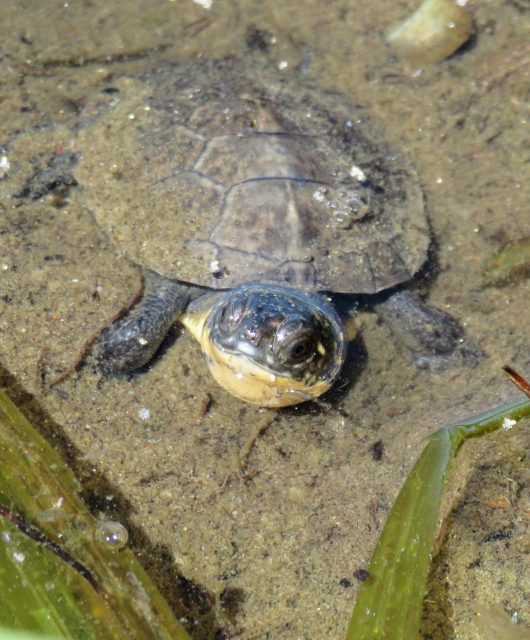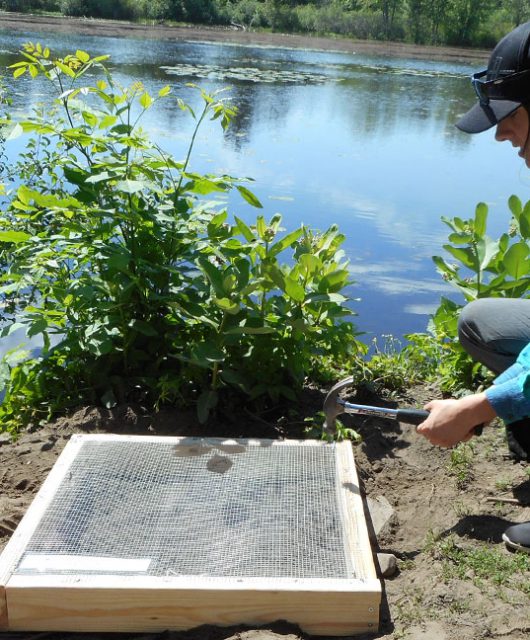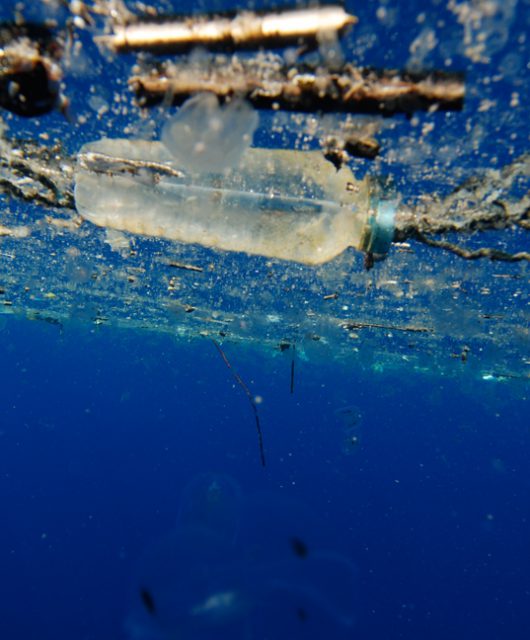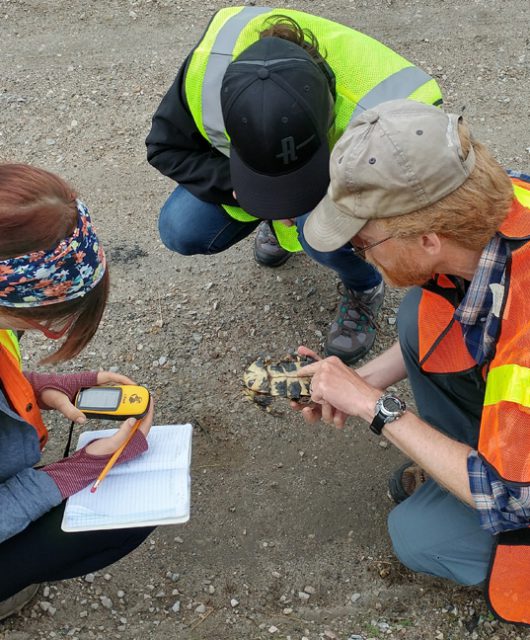You love spending time with family and friends at your shoreline property.
It’s a place to escape the hustle and bustle of everyday life. A place where you can watch the kids swim in the lake, enjoy your coffee on the dock, listen to the beautiful calls of loons and enjoy the slower pace that summer offers.
But over the years, perhaps you have noticed that your lake’s water quality is not as good as it used to be, that your shoreline is eroding, that you are not seeing the diversity of wildlife that you once did. Perhaps you want to do something about it but aren’t sure where to begin. Perhaps money and time are both tight. Below are some suggestions on actions you can do, actions that can make a real difference –no matter your budget!
No Budget to Small Budget
Tip #1: You can create a shoreline buffer by literally doing nothing. Honest!
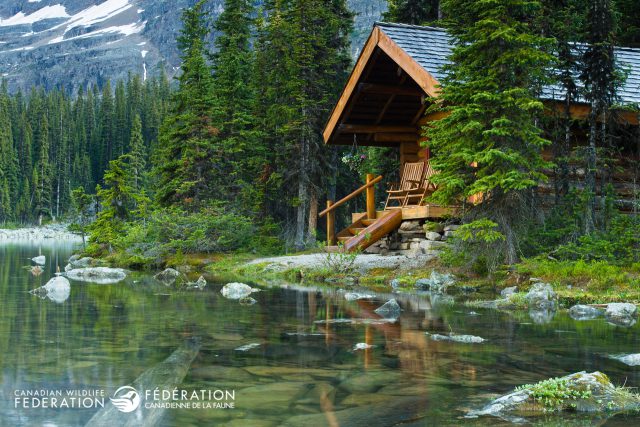
Why? A shoreline buffer is a strip of native vegetation – trees, shrubs, grasses, perennials – on your property along your shoreline. Shoreline buffers are important for so many reasons. They intercept contaminants before they reach the lake, they help reduce erosion, improve water quality, and provide wildlife habitat.
How? Stop mowing a section of your lawn near your shoreline. Dormant seeds and seeds brought in by birds and other wildlife will begin to grow. While any size buffer is better than none, bigger is always better! It is recommended that a buffer should be at least 10 metres deep.
Tip #2: Leave fallen trees and aquatic vegetation.
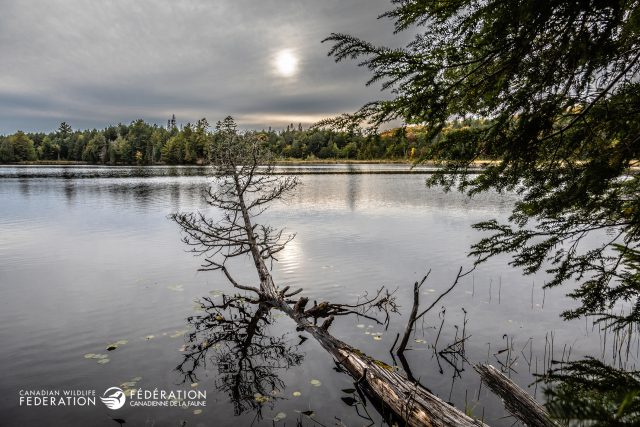
Why? Trees and branches that have fallen into the water or along the shoreline should be left alone as well as aquatic vegetation. Besides, removing them could require a permit! These features provide fish and wildlife habitat. They act as cover for small fish and other aquatic life as they can be used to hide from predators, and they provide shade. They create a transition from land to water for frogs and turtles and even help protect against erosion.
How? This one is also pretty easy – just leave them be!
Tip #3: Stop using synthetic pesticides and fertilizers.
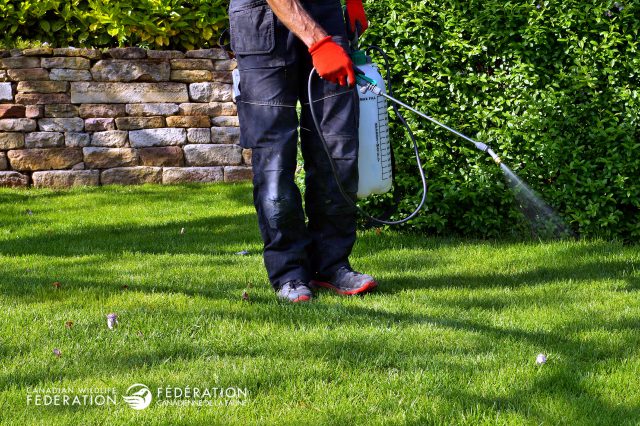
Why? Up to 35 per cent of precipitation can run off our lawns and enter our lakes carrying with it pesticides and fertilizers, among other pollutants. A U.S. Geological Survey study found higher concentrations of some pesticides in urban waterways in comparison to agricultural settings! It’s known that certain pesticides kill beneficial insects which also impacts insect eating birds, they can impact non-target plants and be toxic to fish.
How? Stop using these products! This doesn’t mean you have to abandon your dreams of having a nice lawn as there are safer alternatives. Be sure to check out this website for information on lawn care.
Mid-range Budget
Tip #4: Improve your shoreline buffer with plants.
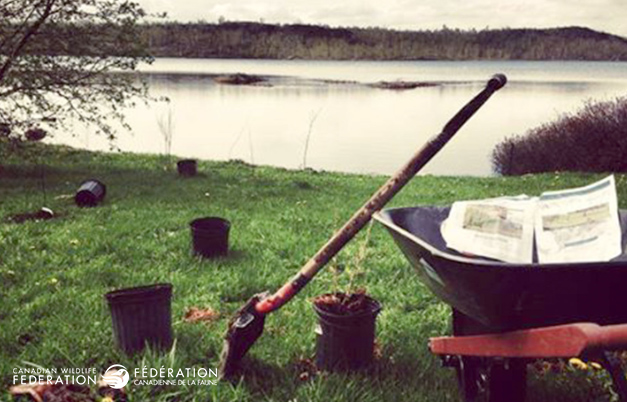
Why? We’ve already discussed the importance of shoreline buffers above but perhaps you want to include certain flowers or attract certain wildlife to your buffer.
How? If this is the case, plant your favourite native plants. You could include plants that bloom at different times of the year and/or plants that have a variety of flower shapes. It won’t be long before you’ll have created your very own buffer oasis and will be seeing pollinators and other beneficial wildlife visiting your plants!
Tip #5: Take care of your septic tank or holding tank.
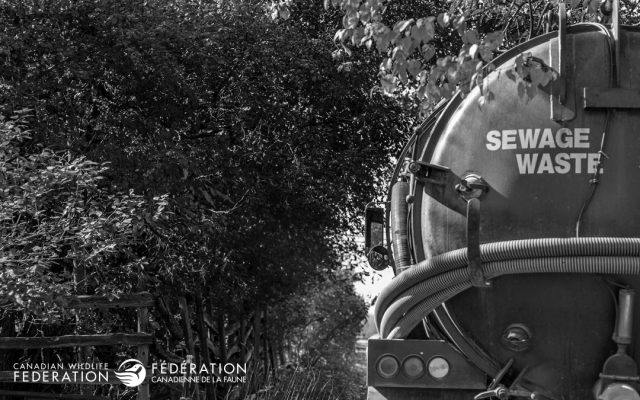
Why? Even though this is in the mid-range budget, this is one that cannot be ignored! You need to take care of your septic system. If your septic isn’t functioning properly, it can allow excess nutrients to reach your lake which can promote excessive weed and algae growth. Algal blooms and abundant weeds not only make the lake unpleasant for swimming and boating, but they can also affect water quality for fish and wildlife. Excess nutrients can also contaminate your drinking water along with your neighbour’s and it can reduce property values.
How? Depending on the size and frequency of use, you should have your septic tank pumped every three to five years. The best time to have your septic tank pumped is in the summer or early fall. This ensures the tank has enough time to refill and re-establish bacterial activity before winter. If you have a holding tank, check it regularly to ensure it is not close to capacity. If your holding tank does not get much use over winter, leave about one foot of liquid in the tank to maintain bacterial action and to reduce the risk of damage from freezing. When your system is getting pumped, make sure to also have it inspected. This should always be done by a licensed professional. There are other important things to keep in mind as well! Reduce your water use to keep solid sludge settled on the bottom of the tank, don’t flush anything that you didn’t produce, don’t drive or park vehicles on top of your drain field, and keep a five to 10 metre buffer around your septic system free of trees and shrubs due to their roots. You may even be able to save a little money if you coordinate the pumping of your tank with neighbours. You can find more information on septic systems here.
Tip #6: Create a path to your shoreline.

Why? If the slope to your shoreline is gentle to moderate and if you want to protect your property from erosion, a well-designed pathway can help! A pathway limits foot traffic to one area protecting the sensitive soil and fragile banks that are often associated with shorelines.
How? Your pathway should follow the contours of the slope in an S curve pattern. A pathway that extends to the shoreline in a straight line encourages erosion as gravity can pull soil and runoff straight down the path towards the water. And make sure you cover your path with an appropriate material. This is dependent on slope and is outlined in the chart below.

Source: https://loveyourlake.ca/project/stairs-or-pathway/
Big Budget
Tip #7: If the access to your shoreline is on a steep slope, build a set of stairs.
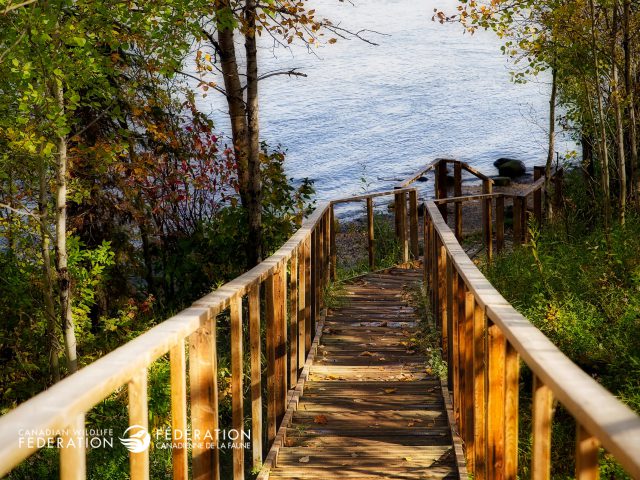
Why? This only applies to shoreline properties that have a steep slope for their shoreline access. In these cases, a set of stairs is recommended as a safer option over a pathway to limit foot traffic and protect your shoreline’s sensitive soil. The cost will depend on how large your staircase needs to be.
How? Your stairs should be raised with open backs and the tread boards should be about 2.5 cm apart. This will allow rain to fall between the boards instead of running off your stairs and into your lake. It will also allow sunlight to reach the vegetation below so it can grow and further protect against erosion. You can also add a few landings to offer a place to rest and enjoy the beautiful view!
Tip #8: If you have a permanent dock – crib, concrete or permanent pile – and you want to replace it, or maybe you don’t have a dock but are looking to put one in, choose an environmentally friendly option – either a cantilever, floating or pipe dock.
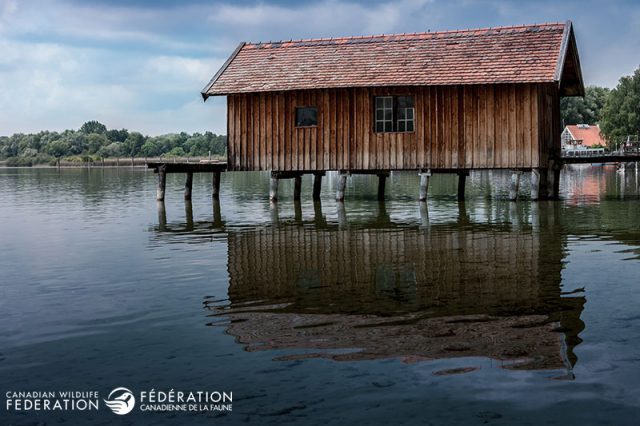
Why? Permanent docks remain in place year-round and have supports that can be made from cribs or concrete piers which can alter or damage fish habitat and prevent water from flowing through and underneath the dock. Typically, permits are no longer issued for permanent docks. On the other hand, environmentally friendly docks can be taken out of the water for winter and cause minimal disturbance to fish and shore habitat. Check out the advantages of each environmentally friendly dock type here.
How? Whether you are replacing an existing dock or installing one for the first time, you will need to get all necessary permits and approvals before you start. It is your responsibility to make sure you have approvals from all regulatory agencies. Begin with Fisheries and Oceans Canada as well as your provincial Ministry of Natural Resources. Choose an environmentally friendly dock as outlined above and keep it away from wetlands and fish spawning grounds.
Tip #9: Install eavestrough on your cottage if you haven’t already.
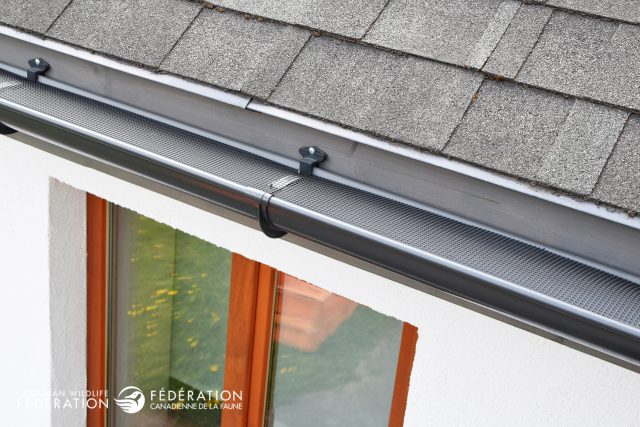
Why? Eavestroughs help to channel water away from the base of your building, helping to protect your foundation. But they also help protect against erosion caused by rainfall by controlling runoff from your roof. Without eavestroughs, runoff from your roof transports additional nutrients and soil to the lake which can harm aquatic life and limit swimming areas.
How? You will want to make sure your eavestroughs are directed into a rain barrel with a mosquito screen or into a catch basin made of stones and plants. This will help cool and cleanse the water by slowing the flow of rainwater and encouraging it to filter through the soil.
Some of these projects may require a permit. Before you get started, do your homework and check with Fisheries and Oceans Canada, your provincial government and your municipality.

